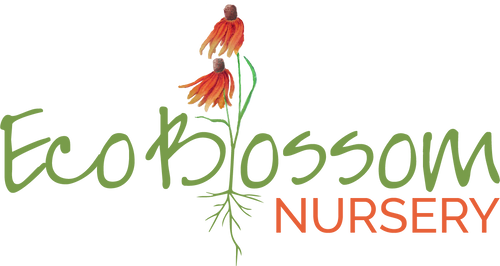Verbesina virginica (Frostweed)
Frostweed features dark green leaves and white flowers. It grows in dappled shade found at the edges of woodlands, where it can form sizable colonies with its spreading rhizomes.
"Frost flowers develop when air temperatures are freezing but the ground still is warm enough for the plant’s root system to be active. Plant juices flow from these roots up into the stem, where the cold air freezes them. As the moisture in the plant freezes, the ice crystals push out through the stem. They may emerge from a small slit to form thin ribbonlike strands or they may split open a whole section of the stem and push out in a thin, curling sheet. Sometimes several ribbons of ice push out to create a flowerlike petal effect. As long as the juices flow, air temperatures remain low, and the plant is shaded from the sun, these ice crystals continue to form." Excerpt from Texas Park and Wildlife publication called 'Frost Flowers'.
Frostweed is a pollinator magnet and a great candidate for informal and naturalized gardens.
AT A GLANCE
| Texas native | Yes |
| Water use | Low to medium |
| Sun exposure | Part sun, part shade, shade |
| Bloom color | White |
| Bloom time | Summer, fall |
| Mature height | 3-6 ft |
| Mature spread | 2-3 ft |
| Attracts | Butterflies, bees |
| Host plant | Bordered Patch butterfly |
| Deer resistant | Yes |
| Notes | Native bee friendly. |
DISTRIBUTION MAPS
 Present in state Present in state |
 Present in county and native Present in county and native |
 Native to North America, but adventive & escaped in state Native to North America, but adventive & escaped in state |
 Not present in state Not present in state |
 Present and rare, native in county Present and rare, native in county |
 Previously present, now extinct Previously present, now extinct |
 Questionable presence (cross-hatched, regardless of color) Questionable presence (cross-hatched, regardless of color) |












